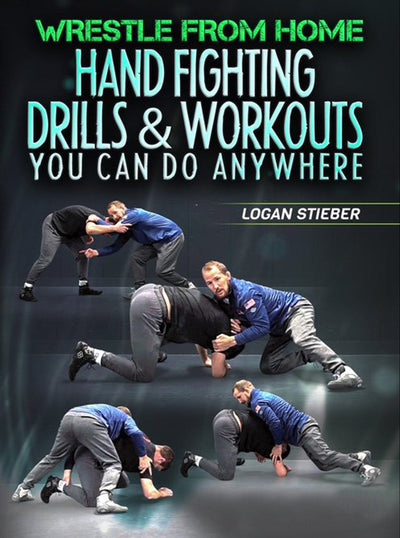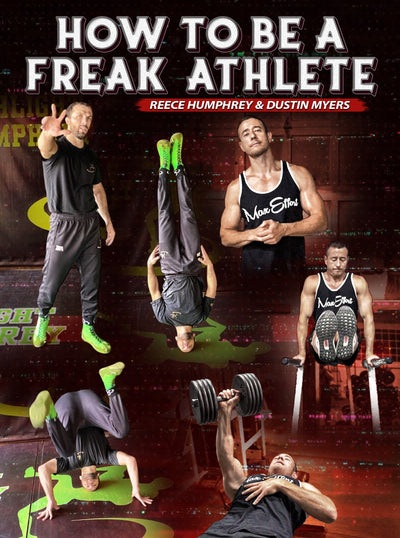Fake Swim Hi C to Backside Low Single by Myles Martin
Myles Martin is currently ranked number 8 in the world in a stacked 86kg (189 pound) division. While in college, he was a national champion, four time all-american, two time national finalist, Big Ten champion, two time Big Ten finalist, two time Cliff Keen Las Vegas Invite Champion, and a UWW University World Champion for the Ohio State Buckeyes. He is the only man to hold multiple wins over Bo Nickal, and recently stepped up to scrap with the #1 86kg in the world, David Taylor, in a Flowrestling event that pitted some of the best in the world against their collegiate counterparts.
Throughout his career, Myles has put on display a combination of athleticism, technique and timing with an assortment of misdirects, ducks and low level attacks. In this clip from his DVD with Fanatic Wrestling, Modern Misdirection Attacks by Myles Martin, he demonstrates a slick set up for your backside single leg off of a faked high crotch, and what’s great about this setup is it doesn’t require you to wrestle from space, it takes place in the hand fighting range.
The Hand Fighting
As you set this attack up with a fake swim high crotch, you need to already have been engaging in the hand fight with your opponent. Your goal is to get him to raise an arm to post on the high crotch side, and so as you wrestle, you want to figure out how to get him to do that. Myles gets his partner to raise the elbow with a simple inside tie reach, a great bread and butter setup. The “swim” motion is basically raising your own elbow and arm back in a sort of ducking motion, then your inside hand reaches as you begin your step.
The Footwork And Real Shot
When Martin shows the high crotch fake, two key components are highlighted. He swapped his stance to mirror his opponent’s lead foot. This makes the initial fake on the high crotch an outside step, where you level change by bending your back knee rather than the lead. There’s two main details that make this the preferred fake. He doesn’t HIT the lead knee, he simply loads his legs up.
Secondly it avoids a reactionary sprawl and go-behind, as he is still on his feet. As a general rule in wrestling, you want to stay on your feet and only go to a knee when it offers either a way to build base or to further penetrate into your opponent’s hips. As his opponent pulls his leg back in reaction to a high crotch, Martin steps his back leg up just ahead of his lead leg, reaches inside the knee and pulls himself behind the leg. Key word being behind. This isn’t a shot where you want to meet the thigh with your shoulder, Martin only drops to a knee once his hips are at the leg, then hits the outside knee pound as a way to get further behind, avoiding all three lines of defense.
The Finish
You can drill a shot entry all you want but if you can’t finish it then it means about squat. Bringing the leg up (ie, tucking the ankle in your armpit and getting to your feet) is about the most effective way to finish any single leg attack. Your opponent is left horribly out of position. But on high level wrestlers it can be tricky. Myles shows two ways to get the leg up. First it to keep a good angle, with your trail foot, and both of your partner’s feet making a row, drive in, cover the leg with your chest, push in, then pull the leg up as your opponent plants on his post foot.
Add misdirection to your offensive arsenal! Click Learn More!
The second way to bring the leg up consists of getting your knee behind the target leg, so that your knee points in the same direction as your opponent’s. Your shoulder then drops below the knee, your outside hand grabs low at the ankle, and your inside hand posts on the mat, as you drive in and again elevate the foot. The final sequence to score is bringing your outside hand under the knee, punching it upwards like an underhook, and blocking your opponent’s post foot and driving them over. Some may enjoy a higher amplitude foot sweep, but personally I’ve found pushing your opponent over a blocked limb can remove a lot of his options to avoid the takedown through athleticism and general timing. The first finish generally is more high percentage, as it relies less on your opponent’s reaction. The second finish will come very naturally if you get a really good angle on the backside shot.
Final Thoughts
This is a really great setup once you’ve conditioned your opponent in the handfight. The concept of misdirections tends to boil down to “this way, no, THIS way”, but a lot of wrestlers tend to limit themselves to left or right. The beauty of this setup is it also uses high level and low level, in CONJUNCTION with left and right. Your opponent has to react to the reach to avoid a setup or upper body position, then react to an attack on the same side but at a different level, then a final committed shot. Often your opponent will overreact to the first shot and struggle to scramble back into position to react to the second. Concepts like this in addition to more shots are more widely touched on (by a much more advanced wrestler) in Myles’s DVD, which covers everything from front headlocks, collar and wrist attacks and over-ties.

There isn’t another system as well developed for modern wrestling, as you can trust these moves the same as Myles does as he competes in one of the toughest weights in the world. Be sure to pick it up today.









